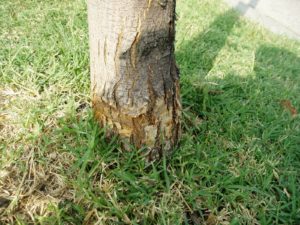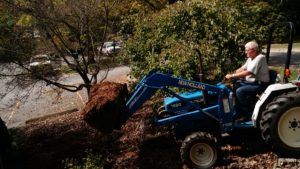Bark Damage on Trees
go.ncsu.edu/readext?592114
en Español / em Português
El inglés es el idioma de control de esta página. En la medida en que haya algún conflicto entre la traducción al inglés y la traducción, el inglés prevalece.
Al hacer clic en el enlace de traducción se activa un servicio de traducción gratuito para convertir la página al español. Al igual que con cualquier traducción por Internet, la conversión no es sensible al contexto y puede que no traduzca el texto en su significado original. NC State Extension no garantiza la exactitud del texto traducido. Por favor, tenga en cuenta que algunas aplicaciones y/o servicios pueden no funcionar como se espera cuando se traducen.
Português
Inglês é o idioma de controle desta página. Na medida que haja algum conflito entre o texto original em Inglês e a tradução, o Inglês prevalece.
Ao clicar no link de tradução, um serviço gratuito de tradução será ativado para converter a página para o Português. Como em qualquer tradução pela internet, a conversão não é sensivel ao contexto e pode não ocorrer a tradução para o significado orginal. O serviço de Extensão da Carolina do Norte (NC State Extension) não garante a exatidão do texto traduzido. Por favor, observe que algumas funções ou serviços podem não funcionar como esperado após a tradução.
English
English is the controlling language of this page. To the extent there is any conflict between the English text and the translation, English controls.
Clicking on the translation link activates a free translation service to convert the page to Spanish. As with any Internet translation, the conversion is not context-sensitive and may not translate the text to its original meaning. NC State Extension does not guarantee the accuracy of the translated text. Please note that some applications and/or services may not function as expected when translated.
Collapse ▲Grass is greening up, and the mowing season is here. You may have already mowed your lawn. Sometimes in haste for the perfectly trimmed lawn, trees and shrubs can be damaged by mowers and string trimmers. Mowers and trimmers cause damage to tree trunks when the operator gets too close. The most severe damage occurs when the tree bark is “slipping” in early spring during leaf emergence.
Bark damage near the base of the tree is a killer of many trees, including dogwoods. Repeated bumping of the trunk with mowers when trying to mow up to the trunk spells almost certain death for dogwoods and other trees.

Without a buffer between the lawn and tree trunks damage is likely. Such is the case with this cherry tree. There is nothing to be done once the damage has taken place. A mulch buffer would have prevented this damage form the weedeater. (Credit Casey Trees)
String trimmers also damage trees. The damage occurs in the cambium layer (conducting tissues of the plant). Initially, there is no obvious evidence of the damage to the tree.
Damage caused by lawnmowers and string trimmers often takes a few years to kill a tree. Wounds near the ground level usually go unnoticed with normal tree growth for a few years. Wounds of this type allow fungi and bacteria to silently invade the vascular system of the tree, initiating the tree’s decline.
Grass or weeds at the base of the tree camouflages the wound. After a few years, growth of the tree declines and the tree appears weak. Weak and declining trees are easy prey to secondary insects, such as the ambrosia beetle.
There is a very simple solution; mulch around the tree. Both older and newly planted trees will benefit from mulch. Also, grass is a competitor of the tree for water and nutrients.
Smother the vegetation from the trunk of the tree to the drip line by placing cardboard or several layers of newspaper on the ground. Then put 2-4 inches of mulch on top of the cardboard. By first putting down a biodegradable barrier such as cardboard, it keeps the vegetation from being able to push up through the mulch layer. I do not recommend using plastic weed barriers under the mulch.
Mulch improves the root zone of the tree. Mulch conserves water, adds nutrients, reduces compaction, and keeps the soil aerated, but most of all, proper mulching will prevent lawnmower damage to tree trunks.
Either hardwood or pine mulch works well. Pine straw can also be used as mulch. The main thing with organic mulches like wood is to apply in a 2-4 inch layer. This will prevent weeds but will not prevent oxygen from getting into the soil. Roots need oxygen to survive.





